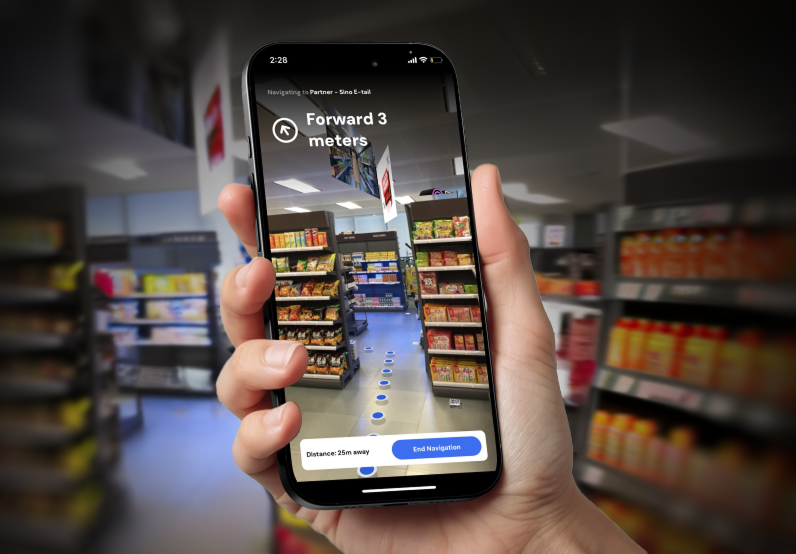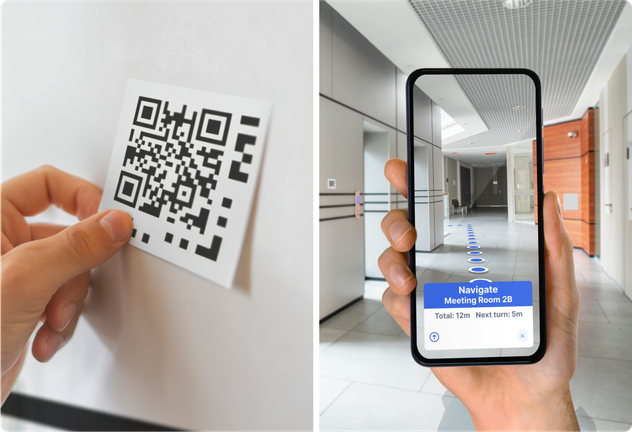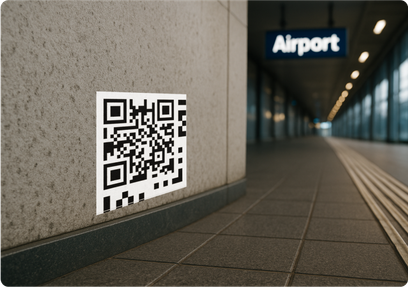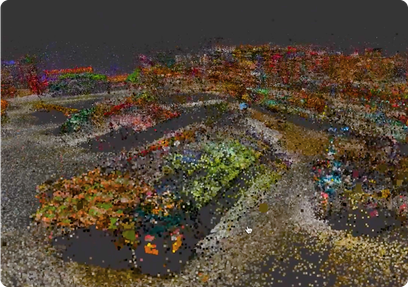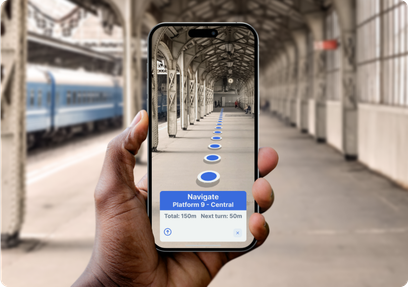Place AQR Markers
AQRs are installed at key locations (entrances, toilets, meeting rooms, aisles) to help users and devices understand where they are within the mapped space.
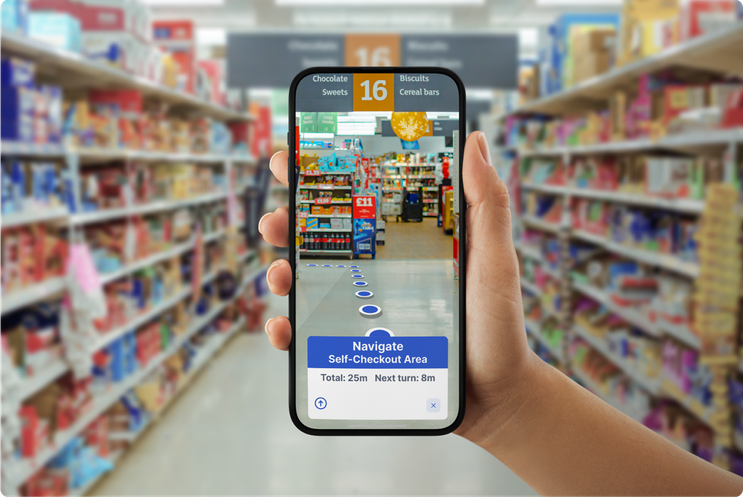
Through our collaboration with Auki Labs, we’re able to deliver a new approach to assistive navigation to help people who are blind or have low vision navigate complex indoor spaces like supermarkets, offices, and public transport hubs with confidence.
Get in touchOur Assistive Navigation solution, developed with our partners at Auki Labs, is an indoor navigation system for people who are blind or have low vision. Providing turn-by-turn guidance in unfamiliar spaces like offices and retail environments, without the need for an app, expensive hardware, or perfect lighting conditions.
Our solution provides real-time, audio-based guidance through offices, retail, and public buildings—helping people who are blind or have low vision navigate from point A to B with confidence. No bluetooth, no beacons—just seamless, step-by-step directions powered by spatial computing and strategically placed QR codes.
Unlike most navigation solutions that require users to download specific apps (and often pre-register), our solution works seamlessly on-device without having to download an app, making it accessible to more people, more easily.
Our assistive navigation solution, developed with Auki Labs, is quick to implement and easy to scale. Using discreet QR codes and spatial mapping through the Auki PoseMesh, there’s no need for costly infrastructure or lengthy installations. Start with a single store, aisle, or key area, and expand at your pace, bringing accessibility to retail, office, or public spaces with minimal disruption.
Assistive Navigation uses strategically placed AQRs to help a smartphone understand exactly where it is within a space. Once scanned, the system delivers turn-by-turn audio guidance through the mobile browser—no apps, no beacons, just intuitive, inclusive navigation.
AQRs are installed at key locations (entrances, toilets, meeting rooms, aisles) to help users and devices understand where they are within the mapped space.
Using a smartphone, the space is quickly mapped with PoseMesh spatial computing and strategically placed Accessible QR (AQR) codes—no costly hardware required.
Users simply scan one of the AQR markers to receive audio guidance or on-screen directions without having to download an app.
Most navigation tools weren’t built with accessibility at their core. They rely on complex apps, hardware, and guesswork, leaving people who are blind or have low vision with inconsistent, frustrating experiences. Zappar and Auki change that.
Challenge |
Traditional Solutions |
Our Solution |
|---|---|---|
Ease of Use |
Often require app downloads and complex setup. |
Works via mobile browser, no app downloads and no friction. |
Accuracy Indoors |
GPS and Wi-Fi-based systems struggle in complex environments. |
Uses spatial anchors and Accessible QR codes for reliable indoor guidance. |
Independence |
Users often need to ask for assistance or rely on companions. |
Enables turn-by-turn navigation with real-time audio directions. |
Adaptability to Change |
Struggles with layout changes, leading to outdated instructions. |
Uses spatial computing that adapts to updated physical environments. |
Scalability |
Requires expensive hardware (e.g., beacons) for each new site. |
Deploys quickly with AQRs – it's cost-effective and easy to scale. |
Assistive navigation works across a wide range of environments, from offices and retail stores to public buildings, transport hubs, and civic spaces. Whether it’s navigating to a meeting room, finding a toilet in a shop, or moving through a station, our solution makes every space more accessible, adaptable, and inclusive.
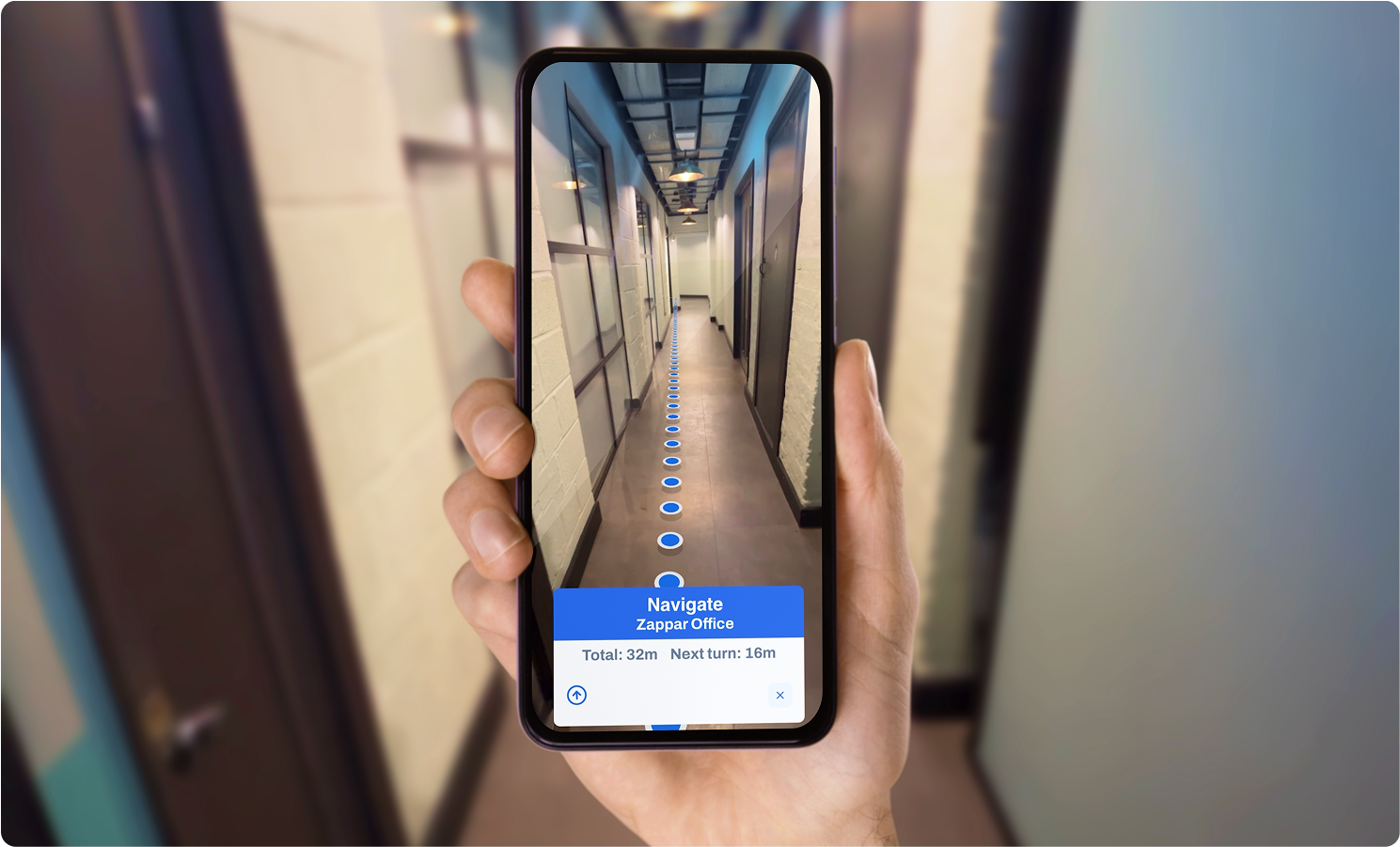
Help employees and visitors with sight loss independently find desks, meeting rooms, toilets, and exits—without needing staff support. Foster a more inclusive workplace that builds confidence, productivity, and a true sense of belonging.
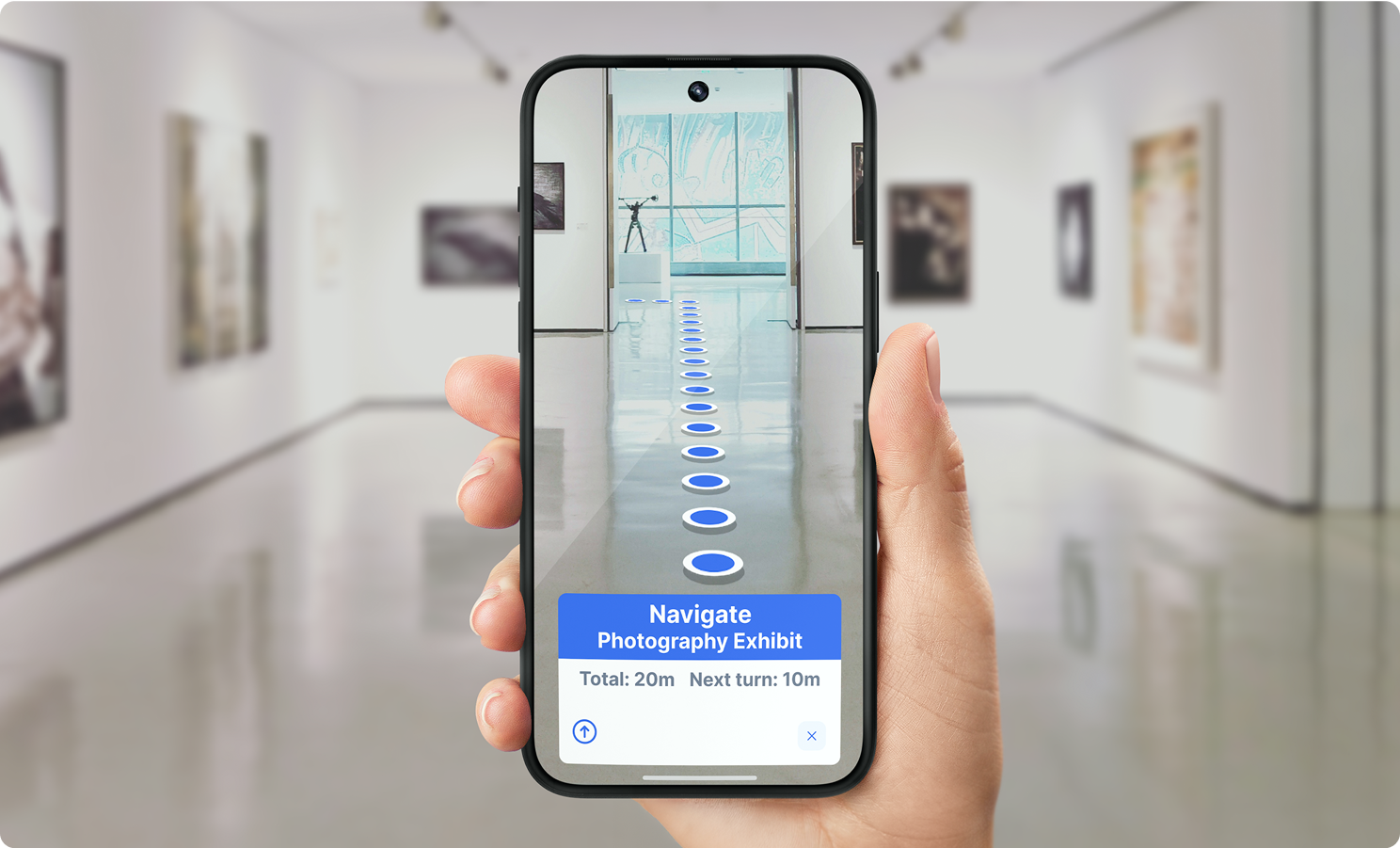
Help visitors navigate entrances, galleries, exhibition rooms, restrooms, and cafés, making the cultural experience more inclusive and empowering for people who are blind or have low vision. Plus, enhance wayfinding to key exhibits or points of interest, enriching visits for all guests.
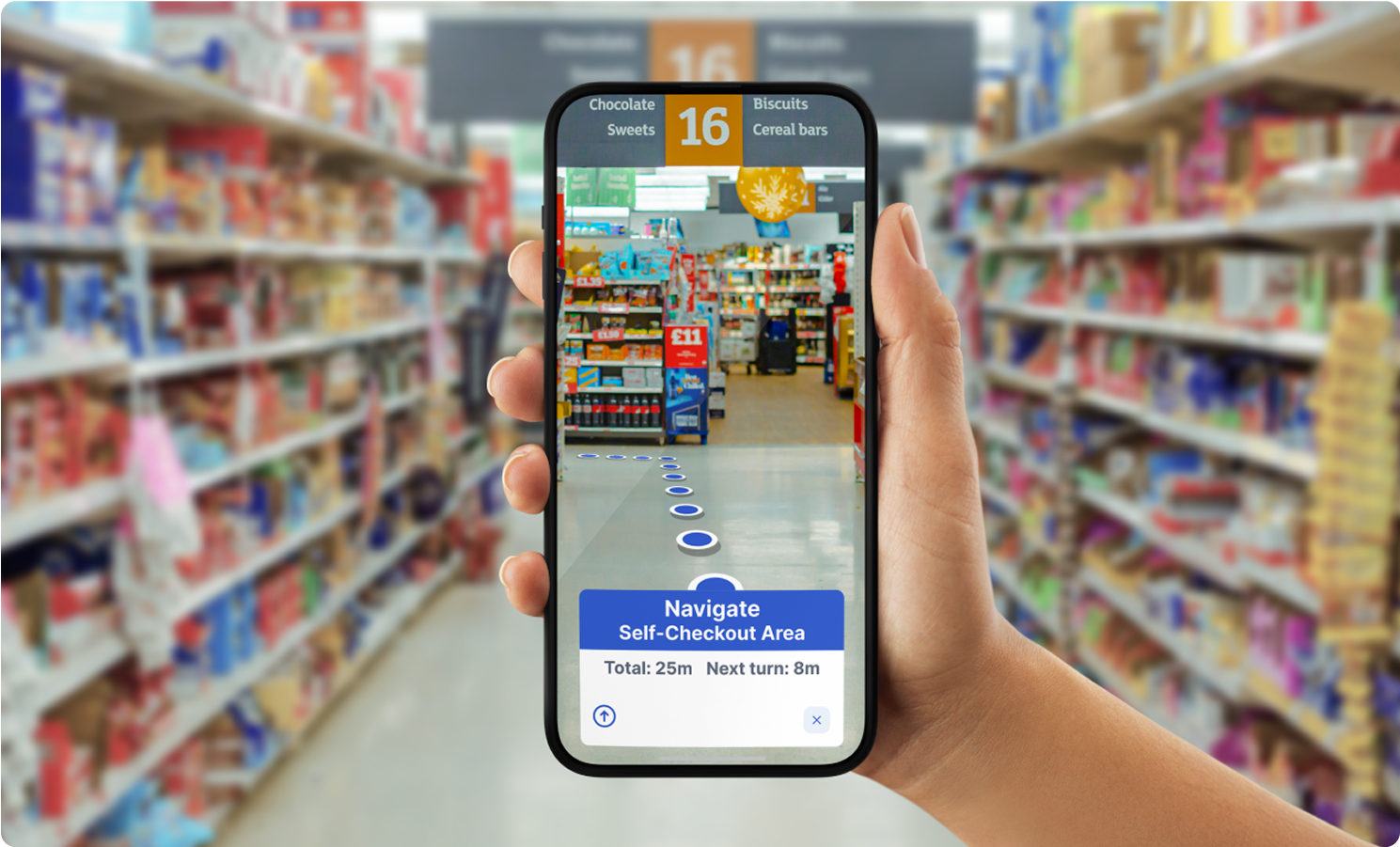
Enable customers to locate entrances, service desks, specific departments, changing rooms, and toilets, making the shopping experience more inclusive and dignified. Whilst also making it easier to find the aisles and items on your shopping list faster and more efficiently.

Support independent navigation in hospitals, libraries, museums, job centres, and town halls—helping people find key services and facilities confidently in unfamiliar spaces.
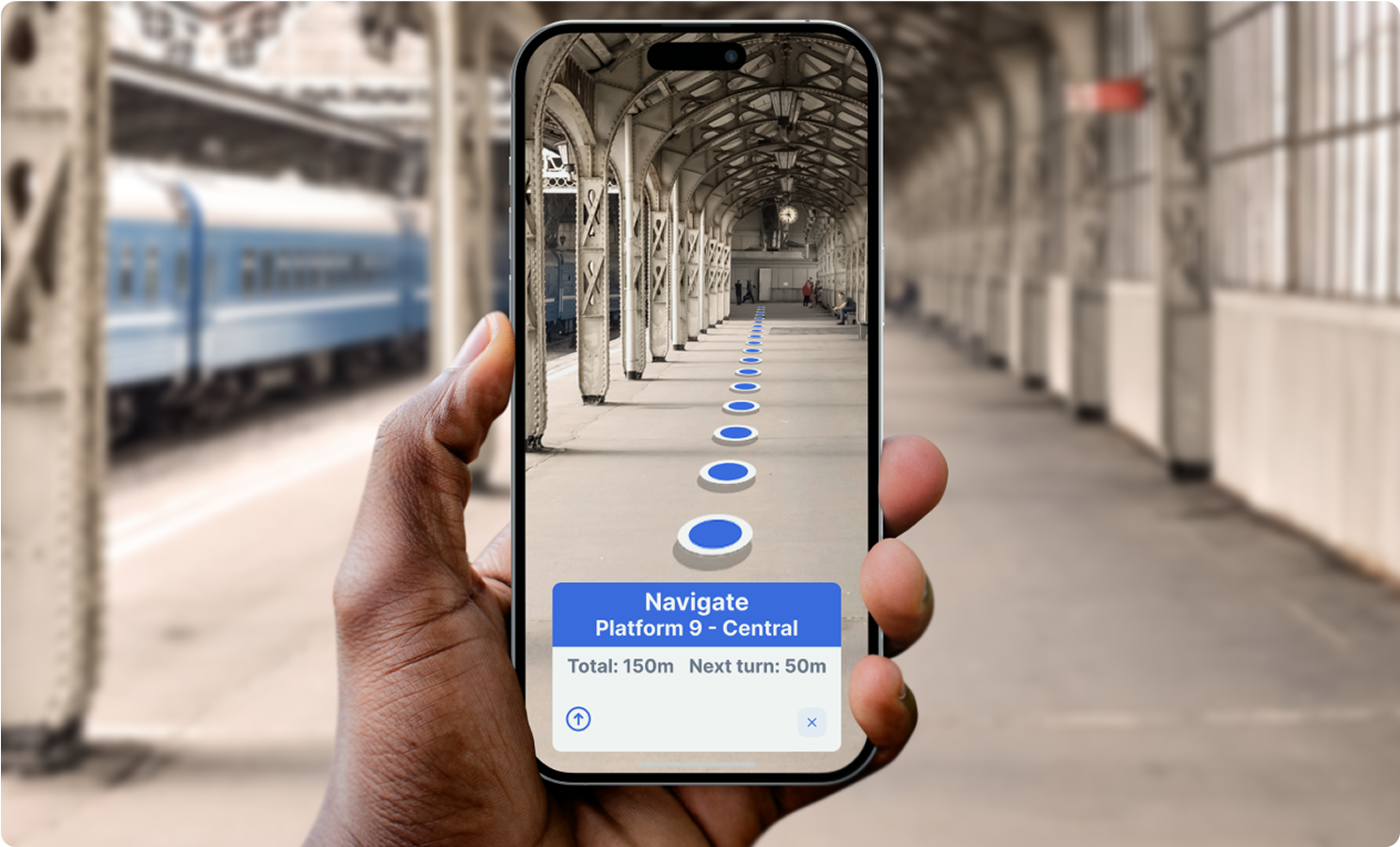
Guide users through complex environments like airports, train stations or bus terminals—from ticket gates to platforms, toilets, and exits—without relying on GPS or staff.
Our solution is designed for flexible, modular rollout so you can start with a single store, corridor, aisle or floor, then scale across sites. It complements your existing accessibility strategy without disrupting operations.
Deploy in one location or area to prove value fast with minimal setup, maximum impact.
Expand from a single site to multiple venues, with flexible deployment that grows as you need.
Integrates smoothly with your space no downtime, no redesigns, just better accessibility.
